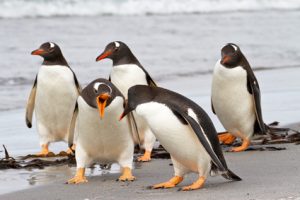- This 3 unit Animal Behaviour Course explores a wide variety of the behaviour exhibited by animals in the wild and to a certain extent in the domestic environment.
- The course examines: The animal at play, the learning process, the development of behaviour, genetics and behaviour, migratory behaviour, aggression and communication.
- This Level 3 Diploma course has open entry status. Anyone wishing to study the science of animal behaviour can enrol.
*You will have access to the course for 12 months only. You can purchase course extensions.
Unit 1
Learning Process and the Development of Behaviour
This unit examines why animals play and how the learning process has evolved, taking into account behavioural development and genetics.
Learn about:
a) Why animals indulge in play activity.
b) How the process of learning has evolved. The process is broken down into Associative Learning (taking into account Operant and Classical Conditioning) and Non-Associative Learning (Habituation, Sensitisation, Cultural Transmission, Neural Programming and Imprinting).
c) Factors which contribute to behavioural development including, Genetics & Evolution, Instinct and Social Development.
d) Examples of Genetic Makeup and the influence on Behaviour, including sex chromosome abnormalities.
Unit 2
Seasonal Breeding, Migratory Behaviour and Mating
This unit looks at the theories of reproduction and the diversity of animal courtship patterns alongside examining migration behaviour in various species.
Learn about:
a) Theories on the timing of reproduction, looking specifically at Opportunist, Long Day, Short Day & Continuous Breeders.
b) Why different species migrate and the factors involved in migration including, navigation using the earth’s magnetic field, the sun & geographical indicators.
c) The diversity of animal courtship patterns along with the advantages and disadvantages of both sexual reproduction and asexual reproduction.
Unit 3
Animal Aggression, Communication and Social Behaviour
This unit covers the reasons for animal aggression, the role that communication plays and why animals have been domesticated over time to become companion animals.
Learn about:
a) Some of the different forms of, and reasons for, animal aggression and territoriality in an attempt to foster an understanding of what these terms signify in the natural world.
b) The relationship between the signal that an animal produces and the reaction that it causes in another animal. Examining the factors involved in conveying information and investigating the role of communication.
c) The reasons why humans desire companion animals (pets) and how they have been domesticated over time.
We offer a selection of accredited and employer recognised courses specifically designed for careers working with animals.
If you have any questions about our courses, please contact us.
We’ve assisted many people to achieve their goal to work with animals. Read more about our 5-star reviews and student success stories.
Gain relevant training to achieve your goal to work with animals.


